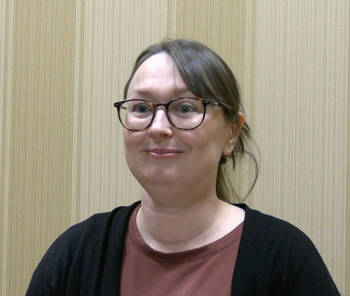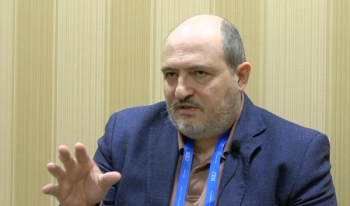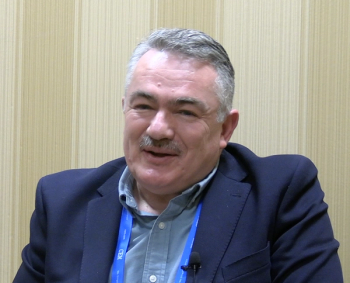
- The SciX 2021 Preview and Companion Guide
- Volume 36
- Issue S9A
Investigating Protein Receptors and Other Biomolecules Using SERS and TERS
Zac Schultz of The Ohio State University and his team used tip-enhanced Raman spectroscopy (TERS) and surface-enhanced Raman spectroscopy (SERS) with gold nanostars to investigate chemical reactions involved in protein–ligand binding. He recently spoke with Spectroscopy about his findings.
To better understand biological processes, spectroscopists are developing innovative approaches that utilize the unique interactions between nanostructured materials and light for near field imaging and ultrasensitive label-free spectroscopic detection. Zac Schultz of The Ohio State University and his team have utilized techniques like tip-enhanced Raman spectroscopy (TERS) as well as surface-enhanced Raman spectroscopy (SERS) with gold nanostars, to demonstrate an approach to investigate chemical interactions involved in protein–ligand binding. Spectroscopy recently spoke to Schultz about this work. Schultz is the 2021 recipient of the Clara D. Craver Award from The Coblentz Society. This interview is part of an ongoing series of interviews with the winners of awards that are presented at the annual SciX conference, which will be held this year from September 26 through October 1, in Providence, Rhode Island.
Recently, you and your team conducted an experiment that demonstrated that gold nanostars (Au NSs) can be used to investigate the binding between the peptide chain arginine–glycine–aspartic acid (RGD) and αvβ3 integrin (1). What was the most important question that this experiment answered, and what other important questions remain?
Protein receptors are responsible for a wide range of biological activity—everything from communicating signals from the environment into the cell to being the docking sites for pathogens and viruses. The key is to understand the specificity of the binding interaction. In this experiment, we demonstrated that the Raman signal from an Au nanostar with a short peptide attached can provide chemical information about the protein receptor it binds with. The detected Raman signal originates from the protein, which allows us to differentiate specific binding to the desired protein from nonspecific, or random, binding that may trigger other biological activity. We believe this is an important tool in understanding protein signaling–related applications like drug targeting.
One of your recently published research articles mentions that TERS and SERS can be used to investigate the interaction between proteins and ligands by selectively detecting the Raman signals of integrin from not only the purified receptor but from intact cell membranes as well (1). Can you elaborate on how the TERS signal differs from the SERS Au NS signal and why one technique may be more advantageous than the other?
Both TERS and SERS amplify the Raman signal from molecules in close (within a nanometer or so) proximity. TERS has the advantage that you can position the enhancement with high spatial precision (a few ~10 nm). SERS generates a comparable enhanced signal, but in SERS, it is typically difficult to say where the signal came from within the laser spot (typically ~1 µm). The improved spatial resolution of TERS provides a more controlled experiment to understand where the signal originates and how many receptors are probed, but this control comes at the significant cost of speed and limited scan areas. In SERS, we can probe an entire cell (20 x 20 µm) in the same time it takes to acquire a 1 x 1 µm TERS image.Interestingly, in our prior TERS work on RGD and integrins we detected nearly identical signals to our SERS work with Au nanostars. The SERS work would not have been as definitive without the earlier TERS work, but SERS enables higher throughput for this kind of characterization.
It is described in the Sloan-Dennison paper that chemometric analysis was used to analyze the spectral differences between Au-RGDFC and Au-RGDFC–αvβ3 NSs (1). Why was multivariate curve resolution (MCR) applied, and what were you able to demonstrate using this data analysis technique?
Multivariate analysis enables us to use the entire Raman spectrum as the signature for the molecule. In univariate analysis, a single peak could arise from different molecules containing similar components; however, by using multivariate analysis, we are able to differentiate signals that might share a common peak and extract data associated with whole spectrum. We use MCR because it generates components that more closely resemble the spectra of molecules that comprise the observed signals. One of the more compelling findings is the MCR component from a purified integrin receptor in solution is nearly identical to the component determined in cells, providing confidence to the molecular basis of our work.
In another recent study you collaborated on, you and your team used the liquid chromatography (LC)–SERS technique to detect metabolites (2). Metabolomics, which is the large-scale study of small molecules, is a powerful systems biology approach that monitors changes in biomolecule concentrations to diagnose and monitor health and disease. What challenges did you face in using this technique and what surprised you about the results obtained?
Metabolomics is an incredibly complex field and analyzing metabolites from cellular samples means there are many molecules present that can interfere with detection. A common problem in SERS is that the molecules stick to the surface, which complicates sequential detection of molecules; but we were able to statistically validate unique signals in our SERS chromatogram, which really opened the door to our work in this area. Honestly, the level of reproducibility from the cellular samples was impressive. I expected that we would identify one or two key signals, but our analysis showed patterns in a larger number of metabolites from cellular samples.
Metabolomics has emerged as a promising avenue in cancer research and diagnostics. What results have you achieved so far in this field using LC–SERS?
As demonstrated in our 2020 Angewandte Chemie publication, the metabolites detected by LC–SERS appear to be specific to the genetics of the tumor model. We examined normal tissue, and several mouse-tumor models of breast cancer, and observed unique metabolite patterns in each biological sample. This supports the idea that metabolomics can be used to monitor cancer progression and, potentially, response to therapy. This is not specific to SERS; however, the instrumentation costs associated with SERS are significantly lower than with many other techniques. These reduced costs may facilitate access. We are hopeful our work may enable point-of-care metabolomics to assist in the diagnosis and treatment of cancer and other diseases.
Has receiving the Coblentz Society Clara D. Craver Award been an encouragement for you? Will you continue with your current research plans moving forward or do you see a change in your research topic emphasis?
It is always nice to be recognized for the work you are doing. While I get to accept the award, it also validates the hard work and contributions of my students, postdocs, and collaborators. Recognition like the Clara Craver Award provides motivation to continue that work and further advance science. Moving forward, we plan to continue advancing Raman detection for biomedical applications. We are also interested in energy applications and hope to develop new vibrational spectroscopy–based approaches to address these and other challenges.
References
(1) S. Sloan-Dennison and Z.D. Schultz, Chem Sci. 10, 1807 (2019). DOI: 10.1039/c8sc05035j.
(2) L. Xiao, C. Wang, C. Dai, L.E. Littlepage, J. Li, and Z.D. Schultz, Angew. Chem. Int. Ed. 59, 1–6 (2020). DOI: 10.1002/anie.201912387.
Zac Schultz is an associate professor at The Ohio State University. Direct correspondence to:
Articles in this issue
over 4 years ago
Beyond the Beaker: How to Advance Your Scientific Careerover 4 years ago
Exploring Neurochemistry Using Raman Spectroscopyover 4 years ago
Recording the Raman Spectrum of a Single MoleculeNewsletter
Get essential updates on the latest spectroscopy technologies, regulatory standards, and best practices—subscribe today to Spectroscopy.




